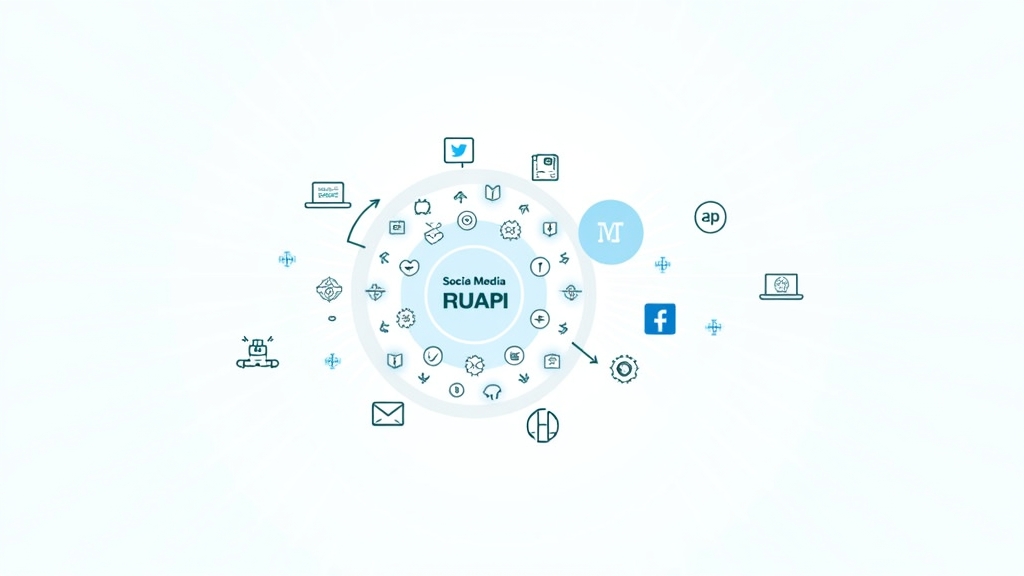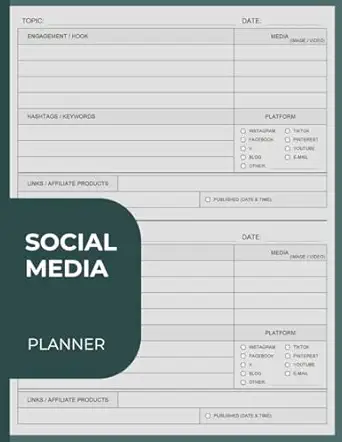Marketing: Understanding Social Media API Integration
Introduction
In today’s digital world, social media plays a crucial role in marketing strategies. One way to enhance your marketing efforts is through Social Media API (Application Programming Interface) integration. This technology allows different software applications to communicate with each other, making it easier for businesses to connect with their audience. By understanding how social media APIs work and their importance in marketing, you can leverage these tools to improve your campaigns and reach more customers effectively.
What is Social Media API Integration?
Social Media API integration refers to the process of connecting various social media platforms with your business systems using APIs. An API acts as a bridge that allows different software applications to share data and functionalities seamlessly. For example, when you post content on Facebook or Twitter through a third-party tool, that tool uses the respective platform’s API to make it happen.
Importance of Social Media APIs in Marketing
Social media APIs are essential for marketers because they enable automation and data sharing across platforms. With these integrations, you can gather insights about customer behavior, manage content more efficiently, and engage with your audience on multiple channels without manual effort. This not only saves time but also enhances the overall effectiveness of your marketing strategy.
Benefits of Social Media API Integration
Enhanced Data Analysis and Insights
One significant benefit of social media API integration is improved data analysis capabilities. By collecting data from various platforms through their APIs, you can gain valuable insights into customer preferences and behaviors. This information helps you tailor your marketing strategies based on real-time feedback.
Streamlined Content Management
Another advantage is streamlined content management. With integrated systems, you can schedule posts across multiple platforms from one dashboard instead of logging into each account separately. This makes managing your social media presence much easier and ensures consistent messaging across all channels.
Improved Customer Engagement
Social media APIs also facilitate better customer engagement. You can automate responses to common inquiries or comments using chatbots connected via an API. This means quicker replies for customers and enhanced interaction between them and your brand.
Popular Social Media APIs for Marketing
Facebook Graph API
The Facebook Graph API allows developers to access user data from Facebook’s vast network. It enables businesses to create targeted ads based on user interests and behaviors while providing insights into ad performance.
Twitter API
Twitter’s API offers features like posting tweets automatically or fetching user timelines programmatically. Marketers use this tool for real-time engagement during events or trending topics by quickly sharing relevant content.
Instagram Graph API
With the Instagram Graph API, businesses can manage their Instagram accounts more effectively by scheduling posts or analyzing engagement metrics directly from their preferred tools.
LinkedIn API
The LinkedIn API helps companies connect with professionals in specific industries by allowing them to share job postings or company updates directly within the platform’s ecosystem.
How to Implement Social Media API Integration in Your Marketing Strategy
Identifying Your Objectives and Needs
Before integrating any APIs into your marketing strategy, it’s vital first to identify what you want to achieve—whether it’s improving customer service response times or enhancing analytics capabilities.
Choosing the Right Platform and Tools
Next, choose the right platforms that align with your goals along with suitable tools that support those integrations effectively—many options exist depending on whether you’re focused on analytics or content management.
Steps to Integrate APIs into Your Existing Systems
Once you’ve identified objectives and selected tools, follow these steps: start by reviewing documentation provided by each social media platform; then set up authentication processes; finally test connections thoroughly before going live!
Best Practices for Utilizing Social Media APIs
Ensuring Data Privacy and Compliance
When using social media APIs, always prioritize data privacy compliance according to regulations such as GDPR (General Data Protection Regulation). Ensure users know how their information will be used when interacting with your brand online!
Regularly Updating and Maintaining Integrations
Keep all integrations updated regularly! Outdated connections may lead not only malfunctioning features but also security vulnerabilities over time if left unchecked!
Monitoring Performance Metrics
Lastly—monitor performance metrics consistently! Analyze which aspects are working well versus those needing improvement so adjustments can be made accordingly moving forward!
Challenges of Social Media API Integration
Technical Limitations
Despite its benefits—technical limitations exist! Not every feature available natively within a platform may be accessible via its corresponding api endpoint leading potential frustrations during implementation phases!
Changing API Policies
Additionally—social networks frequently update policies governing usage rights surrounding their apis meaning marketers must stay informed about changes affecting current integrations regularly!
Managing Multiple Platforms
Finally—managing multiple platforms simultaneously presents challenges too! Keeping track of distinct requirements per channel could become overwhelming without proper organization systems implemented beforehand ensuring smooth operations throughout campaigns launched across diverse environments alike!
Case Studies: Successful Examples of Social Media API Integration in Marketing
Many brands have successfully utilized social media APIs within their marketing strategies! For instance—a popular clothing retailer integrated Instagram’s Graph Api enabling seamless product tagging directly onto images shared boosting sales conversions significantly due increased visibility among followers who engaged actively through likes/comments/shares generated organically thereafter driving traffic toward website landing pages designed specifically around featured items promoted therein too showcasing effective utilization overall demonstrating tangible results achieved thanks leveraging modern technology available today!
Conclusion
Understanding social media API integration is vital for modern marketing success. By utilizing these powerful tools correctly—from identifying objectives down implementing best practices—you’ll enhance engagement levels while streamlining processes ultimately leading toward achieving desired outcomes efficiently over time without unnecessary complications arising unexpectedly along journey ahead together collaboratively working towards mutual goals established initially setting stage groundwork laid forth previously discussed herein above comprehensively outlining key components involved throughout entire process undertaken collectively moving forward confidently embracing future possibilities awaiting exploration ahead eagerly anticipating next steps taken onward progressing further still striving excellence continually pursuing growth opportunities abound endlessly forevermore…
📢 Explore More: Continue Your Journey!
If this article helped you understand how social media APIS work in marketing strategies effectively check out How Automation Can Transform Your Marketing Efforts! It covers innovative techniques helping streamline workflows while maximizing productivity gains effortlessly.














![NEEWER 55W 18"/45cm Ring Light Kit [New Version], 5600K Dimmable ...](https://m.media-amazon.com/images/I/414QLqvZWLL.jpg)








